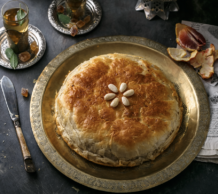A Virtual Tour Top 8 Secret Places in Casablanca
While travel to Morocco has come to a near standstill during the coronavirus pandemic, it is possible to visit Casablanca, the country’s most urban port city and commercial hub. Our Casablanca Virtual Tour enables you to become an armchair traveler with the blink of an eye while exploring the French colonial- Mauresque-Moorish- and European Art deco city and it’s historical medina. You may use our Casablanca map to discover our Top 8 Secret Places as your guide, then click on the images for a virtual video tour.

What Places Will You See on the Top 8 Secret Places In Casablanca
1. Grand Hassan II Mosque
Considered the second largest mosque in Africa and the 7th largest in the world. Its minaret stands at 689 ft and is the second-largest in the world.
2. Museum of Moroccan Judaism
Established in 1997, this is the only museum devoted to Judaism in the Arab world.
3. The Corniche
Well known for its string of glamorous Atlantic beach clubs in the Ain Diab neighborhood, this avenue is popular at night for its trendy nightclubs, sea-facing cocktail lounges. During the day sunbathers and surfers enjoy it’s cafe terraces and waves.
4. Parc de la Ligue Arabe
Located in the center of the city, this urban oasis covers 30 acres of land and is bisected by Moulay Youssef Boulevard.

5. Patisserie Bennis Habous
A family-owned bakery since 1930 with handcrafted Moroccan treats, including sweet & savory pastries.
6. Marche Centrale
this 20th-century colonial building is a vibrant market place and has both historical and cultural significance.
7. La Squala Cafe Maure
Both locals and travelers in the know enjoy this charming outdoor Moroccan venue for its delicious breakfast spreads and extensive tagine menu.
8. Historic Medina
This ancient part of the city was first inhabited by the Berbers in 10 BC and later by the Phoenicians and Romans who established trade routes with the south of Mauritania. Today the bustling medina is the best place to see traditional Moroccan life.





